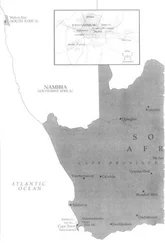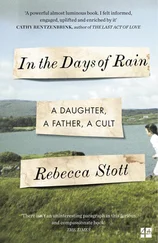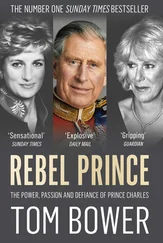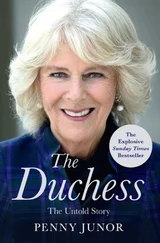Mandela’s father already had three sons by other wives, but they had already left home. As a boy, he had much more freedom than his sisters. He was very close to his mother, but would often stay with another of his father’s wives, with whom he felt the same security and love as with Nosekeni Fanny. Throughout his life he would always feel most at ease with women – particularly with strong women who could provide rewarding friendships, which may be linked to his childhood experience. He thrived within his extended family of cousins, stepmothers and half-brothers and-sisters (Bantu languages have no words for stepsisters or stepmothers, so he called all his father’s wives his ‘mothers’). ‘I had mothers who were very supportive and regarded me as their son,’ he recalled. ‘Not as their stepson or half-son, as you would say in the culture amongst whites. They were mothers in the proper sense of the word.’ His happy experience as a son loved by four mothers made his childhood very secure, and he sometimes talks nostalgically about polygamy at that time, although he firmly rejects it in today’s conditions: ‘Quite inexcusable. It shows contempt for women, and it’s something I discourage totally.’ 6
In his letters and memoirs Mandela often harks back to his life as a country boy. From his prison cell he wrote vividly about the splendour of the hills and streams, the pleasures of swimming in the pools, drinking milk straight from the cows’ udders or eating maize roasted on the cob. Many world leaders, caught up in power-politics in the capitals, have played up their romantic rural roots, like Lloyd George revisiting his Welsh village or Lyndon Johnson longing for his Texas ranch. But President Mandela would be more insistent in calling himself a country boy; and with more reason, for the security and simplicity of his rural upbringing played a crucial part in forming his political confidence.
He was also fortified by his knowledge of his ancestors. His father was the grandson of Ngubengcuka, the great king of the Tembu people who died in 1832, before the British finally imposed their power on Tembuland, the southern part of the Transkei. The Tembu royal family, however poor and dependent they might seem to whites, retained a special grandeur in the Transkei, commanding the loyalty and respect of their people. Mandela was a minor royal, and he always stressed that he was never in the line of succession to the throne. 7He was only one of scores of descendants of King Ngubengcuka, and he came from a junior line. But his father was a trusted friend and confidant of King Dalindyebo, who had succeeded to the Tembu throne, and later of his son King Jongilizwe. Hendry in fact was a kind of prime minister, and the boy Mandela commanded respect in his community.
His was a royal family, as they saw it, but under an occupying force, for since the time of Ngubengcuka their powers had been circumscribed: first by the British government, then after 1910 by the new Union of South Africa, and the Transkei monarchs were torn between their duties to their people and the demands of an alien power. However proud and respected the Tembu royals remained, they were always conscious that the new patricians, the British and the Afrikaners, had deprived them of their authority and wealth. When the young Mandela began to travel beyond his home district, he saw that the towns in the Eastern Cape – Port Shepstone, King William’s Town, Port Elizabeth, Alice – were named after British, not Xhosa, heroes, and that the white men were the real overlords.
Many mission-educated children of Mandela’s generation were named after British imperial heroes and heroines like Wellington, Kitchener, Adelaide or Victoria, and at the age of seven Mandela acquired a new first name, to precede Rolihlahla. ‘From now on you will be Nelson,’ said his teacher. His mother pronounced it ‘Nelisile’, while others would later call him ‘Dalibunga’, his circumcision name. His later city friends called him ‘Nelson’ or ‘Nel’, until he expressed a preference for his clan name, ‘Madiba’, which the whole nation was to adopt.
In 1927 Mandela, then aged nine, came closer to royalty. His father had been suffering from lung disease, and was staying in Mandela’s mother’s house. His friend Jongintaba, the Regent of the Tembu people, was visiting, and Mandela’s sister Mabel overheard Hendry telling him: ‘Sir, I leave my orphan to you to educate. I can see he is progressing and aims high. Teach him and he will respect you.’ The Regent replied: ‘I will take Rolihlahla and educate him.’ Soon afterwards Hendry died. His body was carried on a sledge to his first wife’s house, and a cow was slaughtered; but he was also given a Christian funeral conducted by the Mbekela brothers, and was buried in the local cemetery. 8
Mandela was taken by his mother on a long journey by foot from Qunu to the ‘Great Place’ of Mqhekezweni. It was from here that the Regent presided over his people as acting king, since the heir apparent, Sabata, was too young to rule. Jongintaba, who was also head of the Madiba clan, was indebted to Mandela’s father for recommending him as Regent, which may explain why he so readily agreed to adopt Mandela as if he were his own son. But the tradition of the extended family was much stronger in rural areas than in the towns, for which Mandela remained grateful. As he wrote from jail: ‘it caters for all those who are descended from one ancestor and holds them together as one family’. 9
The Great Place at Mqhekezweni hardly conforms to the European image of a royal palace. Even today it remains ruggedly inaccessible, and is difficult to reach by car. From the main road a rough, deeply-rutted dirt track twists across the landscape, down into dried-up riverbeds and up stony banks, passing isolated clusters of rondavels and huts and a deserted railway station. At last a small settlement appears: two plain houses facing a group of rondavels, with an overgrown garden between them, a school building and some huts beyond. From one house a fine-looking, naturally dignified man emerges and reveals himself as the local chief, the grandson of Jongintaba; he still presides over the local community. He points out the plain rondavel where President Mandela lived as a boy. A photograph on the wall of one of the houses shows the fine face of Jongintaba, with a trim moustache. Nearby is a solemn-looking young Mandela, alongside his smiling face on an election poster of 1994.
To the Western visitor today the Great Place may seem small and remote, but to the young Mandela in 1927 it was the centre of the world, and Mqhekezweni was a metropolis compared to the huts of Qunu. It was here that Mandela spent his most formative years and gained the impressions of kingship which were to influence his whole life. He would never forget the moment when he first saw the Regent arriving in a spectacular motor car, welcomed by his people with shouts of ‘Aaah! Jongintaba!’ (The scene would be re-enacted seventy years later when President Mandela was hailed by cries of ‘Aaah! Dalibunga!’) Mqhekezweni was more prosperous then, and almost self-sufficient; its chief was then also regent, attracting tribesmen from all over Tembuland to consult him.
The nine-year-old boy arrived with only a tin trunk, wearing an old shirt and khaki shorts roughly cut from his father’s old riding breeches, with a piece of string as a belt. His cousin Ntombizodwa, four years older, remembered him as shy, lonely and quite silent, but he was immediately welcomed by Jongintaba and his wife No-England. 10Mandela shared with their son Justice a small whitewashed rondavel containing two beds, a table and an oil lamp. He was treated as one of the family, together with Jongintaba’s daughter Nomafu, and later with Nxeko, the elder brother of Sabata, the heir to the kingdom. He saw himself as a member of a royal family, with a much grander style of life than that of Qunu; but he did not altogether belong to it – which may have spurred his ambition.
Читать дальше
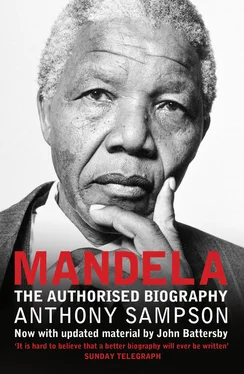

![Мик Уолл - Когда титаны ступали по Земле - биография Led Zeppelin[When Giants Walked the Earth - A Biography of Led Zeppelin]](/books/79443/mik-uoll-kogda-titany-stupali-po-zemle-biografiya-thumb.webp)
